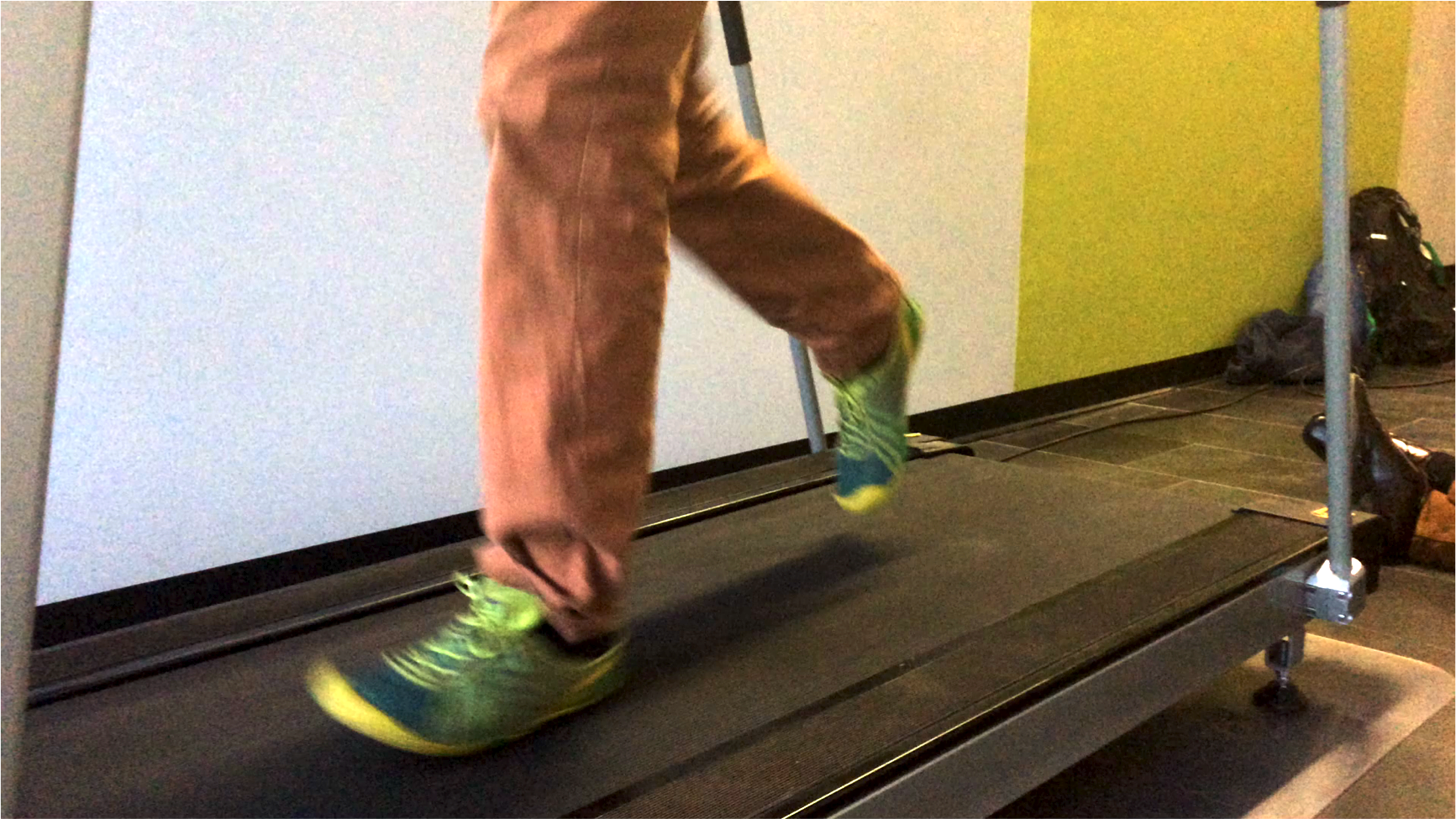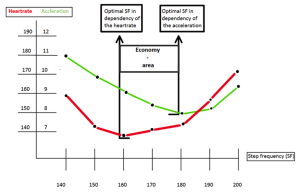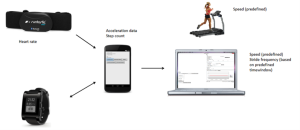Human locomotion has one priority, economy. [1]
Running is an increasingly popular sport with extensive health benefits, but also with a relatively high incidence of injuries [1]. Many injuries are linked to a decreased running gait economy [2]. Therefore providing feedback for gait economy to amateur as well as professional runners seems to be a promising future area of application. A suitable (accurate, convenient and cheap) tool should be able to help the user to increase biomechanical economy to minimize the risks of running injuries related to poor economy.
Regarding to the screened literature [2, 3], raising a non-professional runner´s step frequency above the preferred rate reduces energy consumption and energy absorption -> potential for economy raise [1]. The economy area shown in Figure 1 may be a future assessment to evaluate a runners economy and therefore the potential for an economy raise.
Fig.1.: Trend visualisation of heart rate and accelaration data © Zehetner M.
The experimental procedure focuses on establishing trends of the running economy parameter [2, 4, 5 ,6] heart rate and acceleration data. The participants run different step frequencies at a fixed preferred velocity.
Fig.2.: Data gathering within the test setup
The feasibility study will take place within a predefined test setup to allow a comparison of the gathered data. Therefore each participant will use the same environment.
- Speed – treadmill (daum electronic, provided by the FH St. Pölten) – predefined speed levels
- Heart rate – Runtastic Heart Rate Combo
- Acceleration data – LG Google Nexus 5
- Step count – built-in step counter of LG Google Nexus 5 (using the acceleration sensor)
- Stride frequency – Reborn Tool. Calculated based on predefined time window and step count
The main focus in the Reborn project is to provide the health professional and finally the user with information of the individual thresholds of his/her optimal step frequency window viewed from two different aspects, heart rate and acceleration data.
Project Team:
- Brodeth Ralph
- Reitner Christoph
- Zehetner Manuel
Advisor:
Dr. Brian Horsak
Reference List
1] J. E. A. Bertram, ‘Gait as solution, but what is the problem? Exploring cost, economy and compromise in locomotion’, 198, vol. 1, pp. e3–8.
2] Schubert AG, ‘Influence of Stride Frequency and Length on Running Mechanics: A Systematic Review
3] J. E. A. Bertram and S. J. Hasaneini, ‘Neglected losses and key costs: tracking the energetics of walking and running’, J. Exp. Biol., vol. 216, no. 6, pp. 933–938, Mar. 2013.
4] M. Henriksen, H. Lund, R. Moe-Nilssen, H. Bliddal, and B. Danneskiod-Samsøe, ‘Test-retest reliability of trunk accelerometric gait analysis’, Gait Posture, vol. 19, no. 3, pp. 288–297, Jun. 2004.
5] L. Qasem, A. Cardew, A. Wilson, I. Griffiths, L. G. Halsey, E. L. C. Shepard, A. C. Gleiss, and R. Wilson, ‘Tri-Axial Dynamic Acceleration as a Proxy for Animal Energy Expenditure; Should We Be Summing Values or Calculating the Vector?’, PLoS ONE, vol. 7, no. 2, Feb. 2012.
6] J. M. Neugebauer, D. A. Hawkins, and L. Beckett, ‘Estimating Youth Locomotion Ground Reaction Forces Using an Accelerometer-Based Activity Monitor’, PLoS ONE, vol. 7, no. 10, p. e48182, Oct. 2012.






